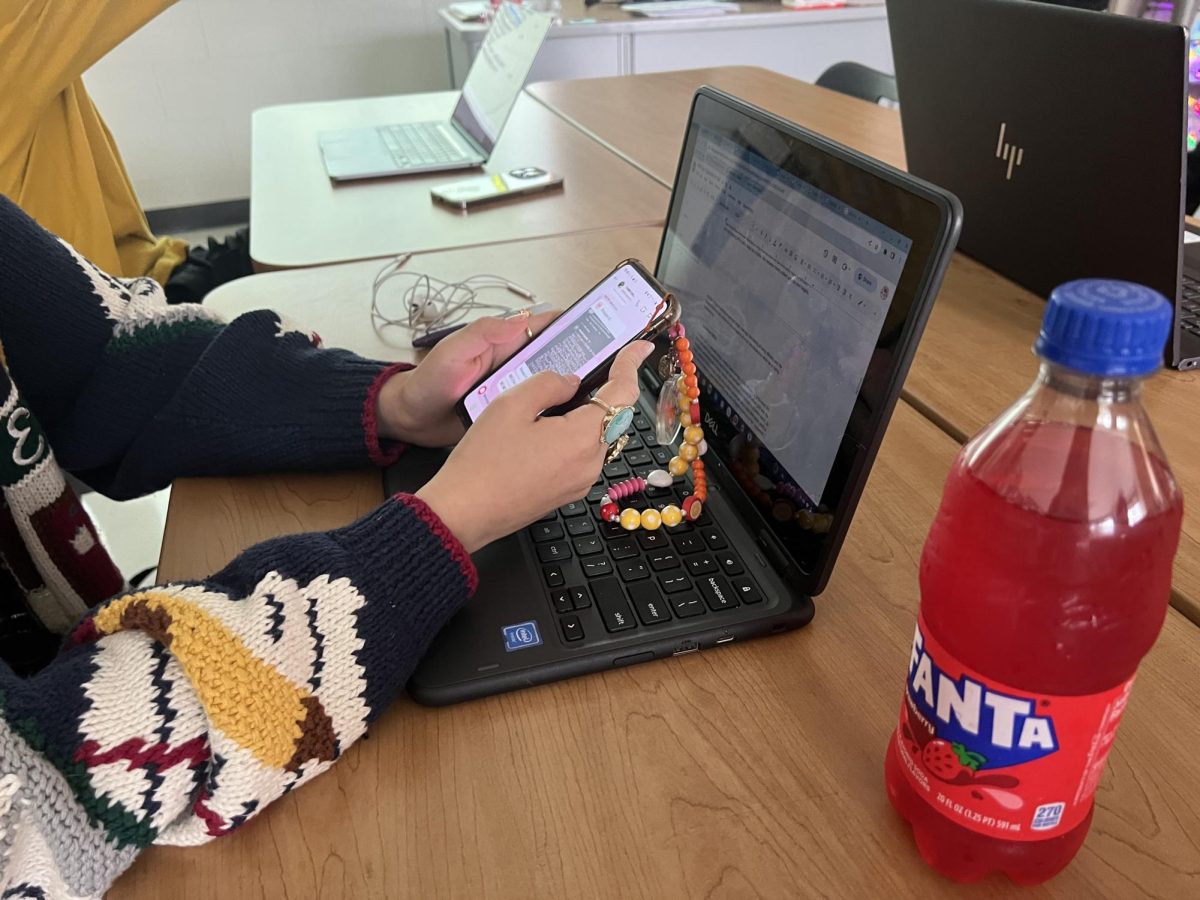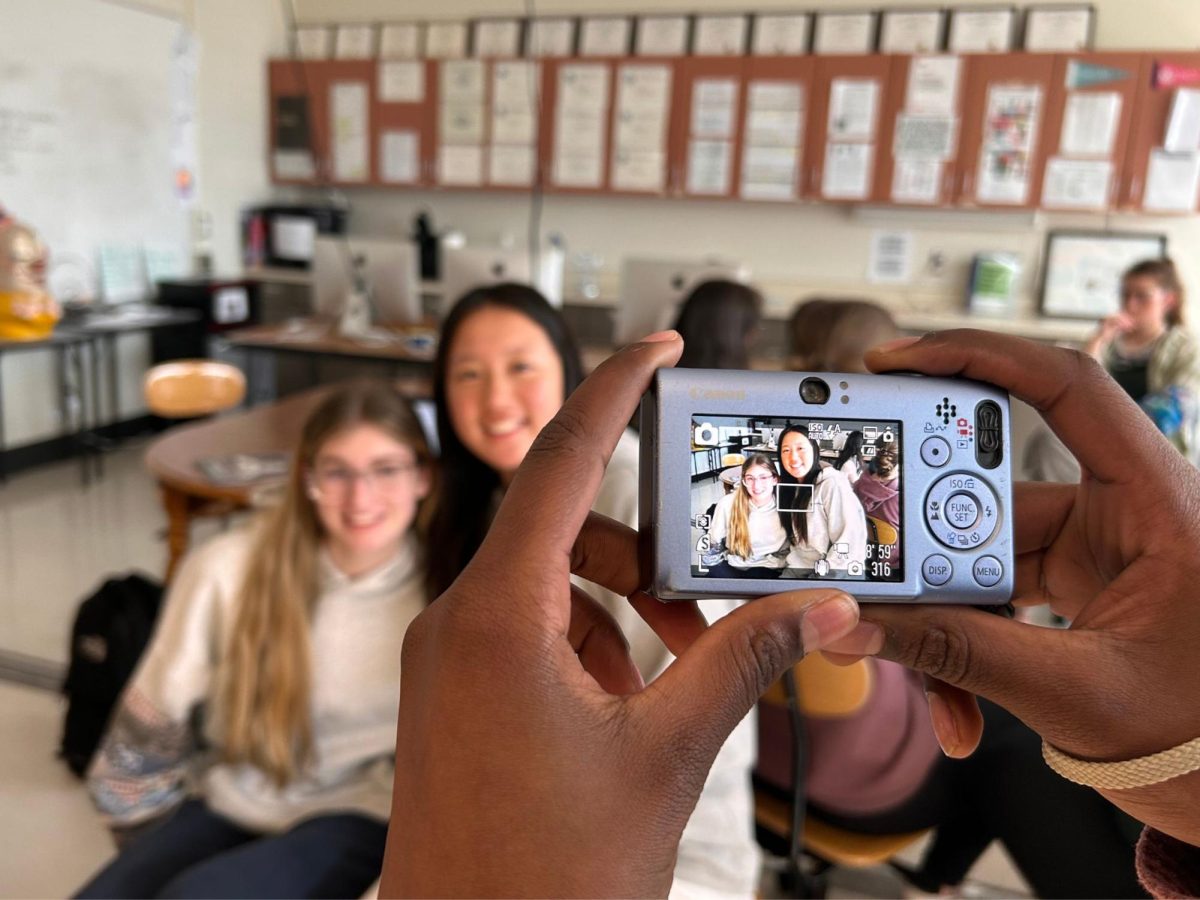Phones have been a crucial part of modern life, changing our everyday schedules from what it was 20 years ago, giving us incredible new resources and helping people around the world lead their lives with more ease. However, can this resource ever truly be incorporated into a student’s school life?
Pew Research Center reports that by the year 2023, about 95% of teens ages 13-17 had phones, showing the overwhelming influence of cell phones on high school students, which can be supported minutes after walking into a high school.
Look around, and you’ll see students on their phones everywhere. Walk into a classroom and there are students with phones in their laps or hiding behind their Chromebook screens, giggling and showing each other videos while a teacher attempts to explain the day’s lesson. Go into the lunchroom, and students sit quietly, playing games or watching movies as they absentmindedly eat. Go to the bathroom, and you’ll see students with phones out, leaning against the wall and calling a friend or taking pictures in the mirrors.
Due to the influx of phone usage during the 2022-2023 school year, West High unveiled its new phone policy aimed at limiting the amount of phones that are used in classrooms. This included the ability to collect phones, have intervention and call home. This was decided by the administration to create consistency between Northwest Junior High and West High.
This year, West High’s administration decided to keep the previous policy, but how do teachers feel about the phones, and do they think the policy works?
“I think students believe themselves to be better at multitasking than they actually are,” said Sarah Long, a science teacher at West.
“Like most technological advances, [a phone] amplifies many aspects of our better and worse natures,” said Tyler James, an English teacher. “I am pretty attached to my phone, so I empathize with students’ dependence on them, but they are absolutely the biggest distraction in my classroom right now.”
However, teachers do agree that phones have their benefits even in the classroom. James recalls a project with 8th-grade English students about creating informative research TikToks. “It was one of the most enjoyable and rich experiences we had all year. They created some incredible content, and engagement was way higher than on the essay that I had assigned in the past,” James said.
Camille Crossett is a Social Studies teacher at West who has a realistic understanding of the relationship between students and phones. “I think they’re here to stay, whether we like it or not. While we may not have all the answers, I think the key will be teaching kids proper phone etiquette and knowing when to use their phones and when not to. There’s a lot parents can do to help set boundaries with this also, at least while their kids are still learning how to regulate screen time on their own,” Crossett said.














